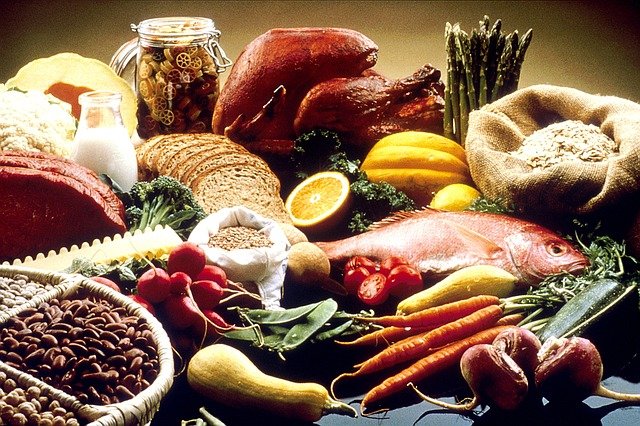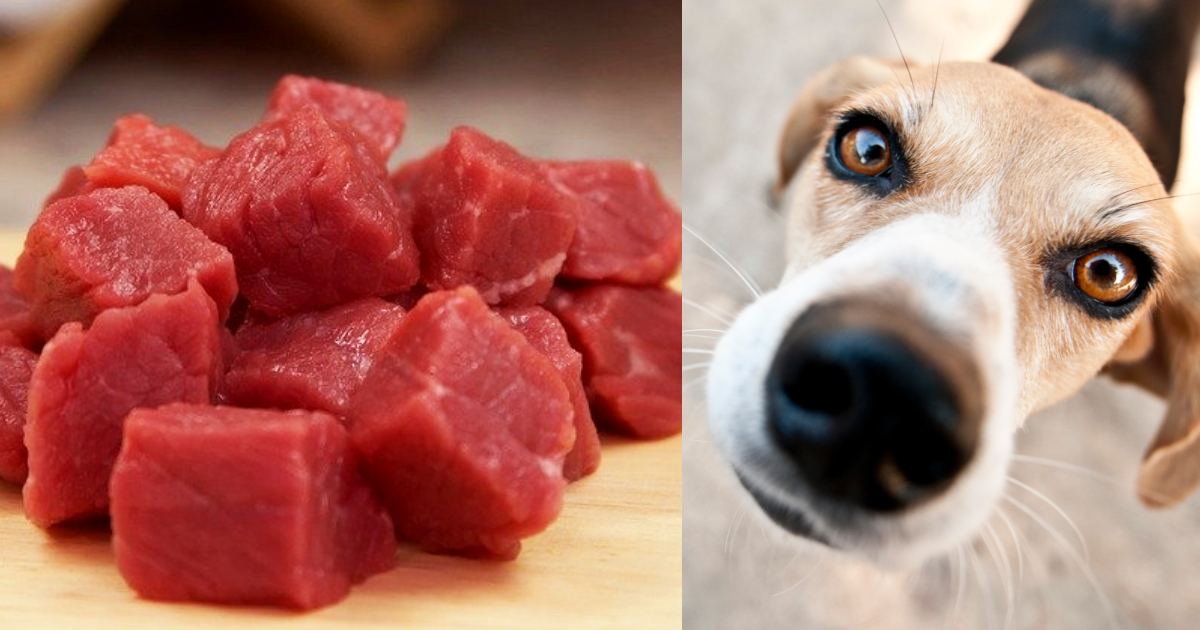
Dogs enjoy a good meal, and what better way to show your pup love than making him a big bowl of homemade dog food? Especially when it’s prepared by your hands and made in your very own kitchen.
But be aware: making homemade dog food isn’t as simple as tossing a T-bone in your pup’s dish and calling it a night. Dogs require specific nutrients to maintain good health. And while store-bought dog food is easy and formulated for complete nutrition, dog food made at home might be the best option if you’re willing to apply the time and effort.
As with our meals, we know good food takes time, and this carries over to dog nutrition as well. When you follow vet-approved homemade pet food recipes, you’re feeding your dog a diet of whole foods and such clean eating can help your best friend operate at optimum levels for years to come.

Whole food diets, whether homemade or commercially prepared, prove to be a better option when it comes to health. Lower-quality foods may be tasty, but they do not have enough of what your dog needs – like lean meat and vital nutrients; and they have too much of what he doesn’t need – like artificial ingredients and preservatives.
As Dr. Joe Bartges, DVM, Ph.D., American College of Veterinary Nutrition board-certified veterinary nutritionist, explains, “Think of it as eating the same highly processed food for every meal, day after day, for years.”
And when put that way, it would be like us eating hot dogs every time we’re hungry. Not only boring, but such a diet would leave us missing nutrients. It’s the same with your dog’s diet. Adding homemade dog food to the mix can spice up doggie’s dinner and provide a wider array of healthy nutrients.
But what constitutes a healthy diet for dogs?
What Dogs Require for a Healthy Diet
In order to craft a healthy plate for your pup, be sure your homemade dog food recipe includes all of the following in order to create a well-balanced meal:
- Meat or fish proteins
- Water
- Fats
- Carbohydrates
- Minerals
- Vitamins
Protein
Protein plays an important role in the canine body by aiding in the production of hormones and also provides energy to keep your pup on her paws. Responsible for supplying essential amino acids, protein also supports healthy bones, muscles, joints, skin, and fur.
Did you know dogs require 23 amino acids? Their bodies make 13 of them, but the other ten come from food sources.
Want an easy and delicious way to add protein to your dog’s diet? Check out iHeartDogs Happy, Healthy Toppers!
Water
Like the human body, dog bodies are made up primarily of water with a moisture content of 60 – 70%. This means any foods you cook for your dog should be loaded with moisture sources in order to keep his vital processes flowing.
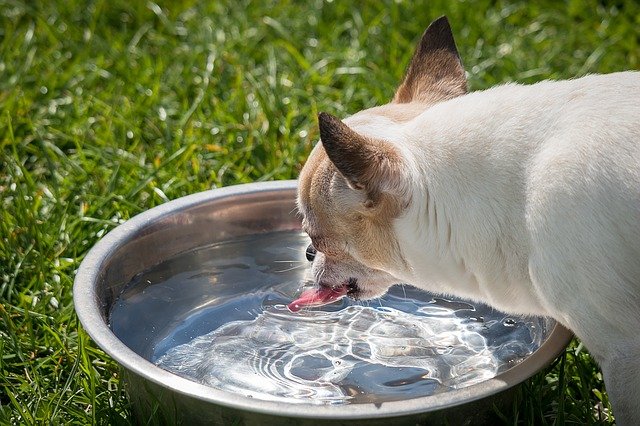
Fats
Healthy fats, found in oils and meat, provide dogs with essential fatty acids like omega-3 and omega-6. Dietary fat gives dogs energy, reduces inflammation, and also helps in the development of cells and tissues. Plus, this vital nutrient is required for the absorption of vitamins A, D, E, and K. While healthy fats are part of a balanced dog diet, too much fat can lead to pancreatitis and cardiovascular disease.
Carbohydrates
Carbs often get a bad rap, but whole-grain carbohydrates provide slow-burning energy to keep dogs moving, both on their paws and in their gut, thanks to a supply of fiber. Carbs also fill bellies, keeping your dog fuller longer after mealtime, so be sure to add healthy, fiber-rich grains, like brown rice or oatmeal, to your homemade dog food.

Vitamins & Minerals
Every member of every species needs vitamins and minerals. Here are the essential vitamins and minerals dogs need for optimum health:
- Vitamins – Vitamin A, B-complex vitamins, Vitamin D, Vitamin E, Vitamin K
- Minerals – Calcium, Phosphorus, Potassium, Sodium, Chloride, Manganese, Sulfur, Iron, Zinc, Iodine, Selenium, Copper
When feeding your dog a healthy, balanced diet, you won’t need to add supplements as they’ll get everything they need from the expert-crafted homemade dog food recipe you’ve selected. As with all good things, too many vitamins and minerals can cause problems as big as those brought on from nutrient deficiency.
So, what ratio of nutrients will create the ideal balance in obtaining all the healthy stuff food has to offer?
Based on research done by a committee of animal nutrition experts, the National Research Council explains:
“Scientific research has shown that an adult dog’s daily diet can contain up to 50% carbohydrates by weight, including 2.5–4.5% from fiber. A minimum of approximately 5.5% of the diet should come from fats and 10% from protein.”
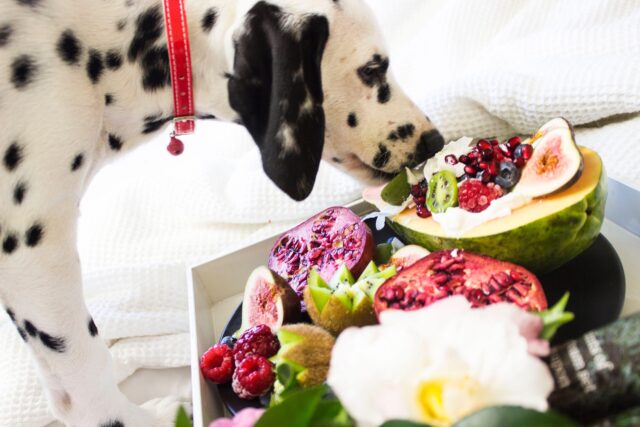
Meet the Meats
Whether you consider them to be carnivores or omnivores, dogs love their meat. Some dogs might be picky about what types of meat they prefer and other hounds will go crazy for any source, any cut, anything as long as hits the floor! Depending on your dog’s taste buds as well as any issues he might have, one type of meat may prove better than another. So, for that all-important protein, let’s meet the meats that are best for dogs:
- Beef – Rich in B12, also known as cobalamin, beef promotes brain health as well as immune, digestive, and nervous system health in dogs. And don’t forget the iron. Beef is heavy with this blood-strengthening mineral.
- Chicken – Poultry provides linoleic acid, an omega-6 fatty acid essential for healthy skin, fur, muscles, and bone.
- Turkey – High in protein, low in fat, turkey is easily digested by most dogs and occurs as a common ingredient in many dog foods, both homemade and commercial.
- Fish – As a protein source tolerated by most dogs, small fish are rich in healthy oils and provide omega-3, which gives dogs a healthy, shiny coat. Fish is also a rich source of phosphorus.
- Duck –Low in saturated fat, duck soothes inflammation, provides a fowl option to dogs allergic to chicken and turkey, and keeps up with the energy demands of busy dogs.
- Rabbit – Another good choice for dogs with allergies, rabbit meat connects a dog to their roots with the taste of the wild.
- Lamb – High in calcium and iron, lamb provides a good option when other meats cause allergic reactions.
- Venison – Packed with B vitamins, deer meat contains less cholesterol than beef and packs a punch of iron.
The Benefits of Homemade Dog Food
When weighing the options of commercial dog food versus homemade dog food, whether raw or cooked, consider these benefits:
- Total control over ingredients, great for dogs with allergies or specialized dietary needs.
- Whole foods over processed ingredients mean richer nutrition as nutrients aren’t lost in the processing of meats, veggies, and grains.
- Cost-efficient when compared to purchasing commercial dog food.
- Bulk preparation allows for an always-stocked freezer.
- Healthy skin and coat thanks to fresh ingredients.
- Whole food means a happy tummy, which means better digestion for good poops.
- The pickiest of palates will find pleasure in the food bowl.
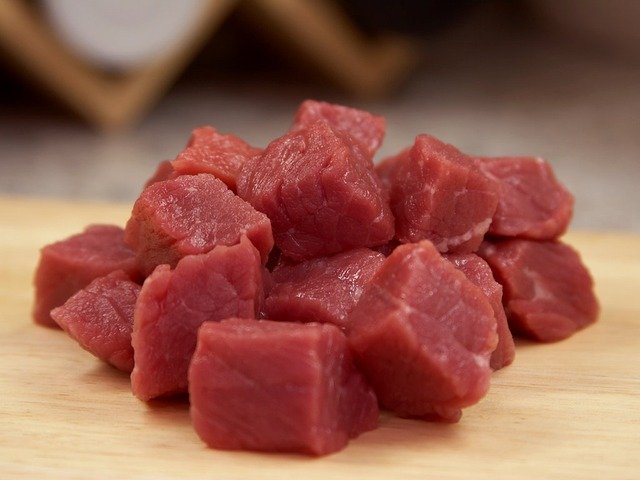
Raw Dog Food Benefits
The canine world is divided over raw food diets for dogs. Those who swear by it as the best thing ever for dogs report such benefits as “shinier coats, healthier skin, improved dental health, increased energy, and smaller stools,” says the American Kennel Club.
Those against a raw diet worry over food contamination and recommend certain dogs stay away from raw altogether.
“Dogs with pancreatitis, cancer, or other diseases may require cooked food. Puppies are also better off having cooked food.”
In the world of raw food, many dog parents are following Dr. Ian Billinghurst’s Biologically Appropriate Raw Food or the BARF diet. Though it sounds kind of gross, this diet is all about eating naturally. The idea behind the BARF diet is feeding dogs as they once ate in the wild, keeping them in line with the foods they were evolved to eat.

Dr. Billinghurst assures feeding dogs in the BARF method is pretty simple, just “use whatever you can find in the way of Whole, RAW, healthy foodstuffs… meat, bones, vegetables and organ meats, etc. – that mimics the diet of a wild or feral animal.”
If you’re interested in starting your dog on a raw food diet, have a look at these 7 Reasons Why So Many People Are Switching Their Dogs To A Raw Diet.
Risks Involved in Homemade Dog Food
Be aware, while making homemade dog food, either cooked or raw, provides many great benefits, it also has some risk factors of which you need to be aware.
- Improper handling of ingredients can cause food-borne illnesses, like salmonella, listeria, and E. coli.
- Not following recipes can result in nutrient deficiency, which can lead to severe illness and even death.
- Accidental overfeeding of nutritional supplements can cause health issues too.

Transitioning to Homemade from Canned Food
Luckily, transitioning your dog to a homemade diet from dry and canned food should be fairly easy thanks to the availability of fresh dog food in refrigerated cases and pre-prepared food home delivery services. Fresh commercial dog food makes a great jumping-off point into transitioning to homemade food.
Dr. Jennifer Coates offers this plan for switching dog foods:
- Day 1 – Mix 20% of the new food with 80% of the old.
- Day 2 – Mix 40% of the new food with 60% of the old.
- Day 3 – Mix 60% of the new food with 40% of the old.
- Day 4 – Mix 80% of the new food with 20% of the old.
- Day 5 – Feed 100% of the new food.
“There are times, however, when I do recommend the cold turkey approach,” says Dr. Coates. “In cases of gastroenteritis, heart failure, kidney disease, some type of bladder stones, canine cognitive dysfunction or food allergies, I will use a prescription diet as I would a medicine because I want the benefits to kick in ASAP.”
You can also help your dog adjust to homemade dog food by adding fresh food to commercial kibble or canned food. Toss a few green beans or a spoonful of pasta into the doggo’s dinner to give her a taste of fresh food and help make the transition to whole foods. Check out these 10 People Foods You CAN Share With Your Dog.
Tools You May Need When Making Your Own Dog Food
Your kitchen is most likely already equipped with items like mixing bowls and utensils, but here are a few more things you’ll need for making your own dog food:
- Meat grinder that can handle bones
- Dietary scale for exact measurements
- Sharp meat knives and shears
- Sturdy cutting boards
- Glass storage jars or other food-safe containers
- Disposable gloves to protect against the spread of foodborne bacteria
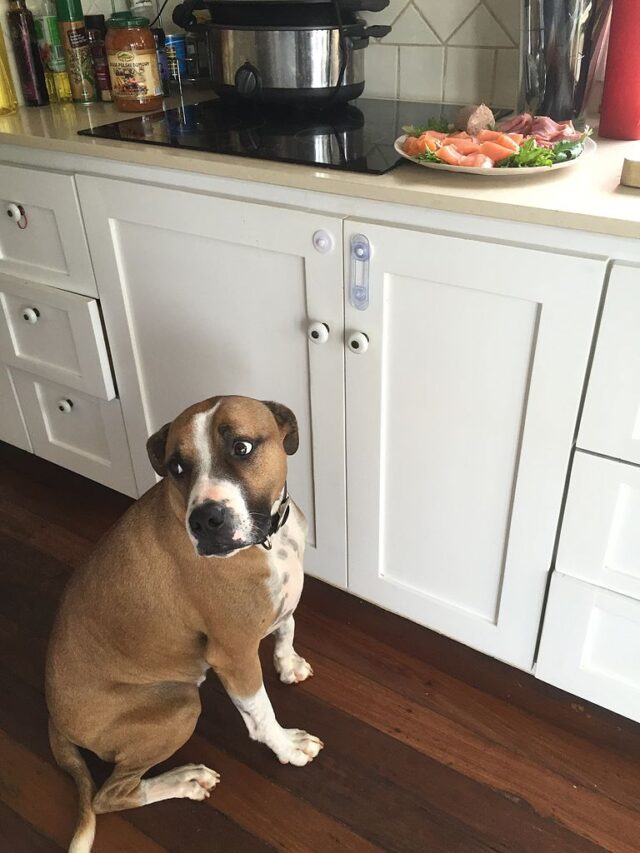
A few things to remember when it comes to making your own dog food:
- Be sure to avoid foods considered toxic to dogs.
- Always remember the importance of following all food handling safety procedures to prevent contamination and food-borne illness.
- Overcooking foods can remove vital nutrients. Be sure you find the right balance of doneness to preserve nutrients and keep your dogs safe.
- Choose vet-approved homemade dog food recipes created by nutrition experts.
- Do not substitute ingredients in these homemade dog food recipes. They have been crafted by canine experts and changing them could result in nutrient deficiencies.
- When buying whole meats, be sure to purchase from trusted suppliers.
- Never feed dogs cooked bones.
How To Make Homemade Dog Food
For dogs with normal nutrition needs, check out this vet-approved homemade dog food recipe from Founders Veterinary Clinic:
The measurements in this recipe are based on nutrition guidelines for a 20 lbs. dog, but amounts can be cut in half for 10 lbs. and doubled for 40 lbs, etc. Founders recommends using these amounts “as a feeding guideline ONLY.”
- 1/4 pound of cooked, skinless chicken
- 1 cup of cooked brown rice
- 1 cup of peas and carrots
- 1 tablespoon of vegetable oil
- 1/4 teaspoon of potassium chloride (a salt substitute).
Cook chicken, brown rice, and vegetables separately. Simply blend all recipes together and serve. This meal is so simple and healthy, you could enjoy a plate while your dog scarfs down her bowl!

DIY Homemade Dog Food
When her dog experienced troubles with an upset stomach, Chungah of Damn Delicious shared, “our vet advised us to feed him a bland diet – chicken and rice without any kind of seasoning.”
So, she created this simple, but well-rounded recipe for DIY Homemade Dog Food:
Ingredients:
- 1 1/2 cups brown rice
- 1 tablespoon olive oil
- 3 pounds ground turkey
- 3 cups baby spinach, chopped
- 2 carrots, shredded
- 1 zucchini, shredded
- 1/2 cup peas, canned or frozen
Directions:
- In a large saucepan of 3 cups water, cook rice according to package instructions; set aside.
- Heat olive oil in a large pot over medium heat. Add ground turkey and cook until browned, about 3-5 minutes, crumbling the turkey as it cooks.
- Stir in spinach, carrots, zucchini, peas and brown rice until the spinach has wilted and the mixture is heated through, about 3-5 minutes.
Let cool completely.
Homemade Dog Food Recipes for Specialized Dietary Needs
For dogs with specialized dietary needs, making homemade dog food gives you control over exactly what goes into your pup’s sensitive stomach. But before you start making special food to help your dog with medical issues, discuss diet and nutrition with the vet.
For example, if your dog has renal problems and you search the internet for homemade dog food for kidney disease, you’ll find recipes, but you’ll need to be sure the ingredients and their amounts are okayed by your vet. Vet-approved homemade dog food recipes for kidney disease will contain extra water or broth, but less salt, protein, and phosphorous than normal diets in order to help taxed dog kidneys have an easier time of filtering.

Once you’ve found a recipe you think your furry darling will enjoy, show a copy to your veterinarian for their approval. After all, this is the medical team treating your best friend. They know her exact needs and can help you adjust diet and ingredients to best suit your dog’s special needs.
Dogs with medical conditions of all array can benefit from homemade custom diets, but definitely talk with your vet before you start snooping around the kitchen for ingredients. Nutrient balance and portion size are important discussion points to have with the doctor as part of keeping your dog’s health in check.
How Much Homemade Dog Food Should You Feed Your Dog?
This isn’t really a cut-and-dried question as every dog has a unique makeup. And even one dog will experience a range of different nutritional needs depending on his age and stage of life.
But, as a guideline, check out this Average Daily Energy Needs Chart from the National Research Council to figure out how many calories your dog needs:
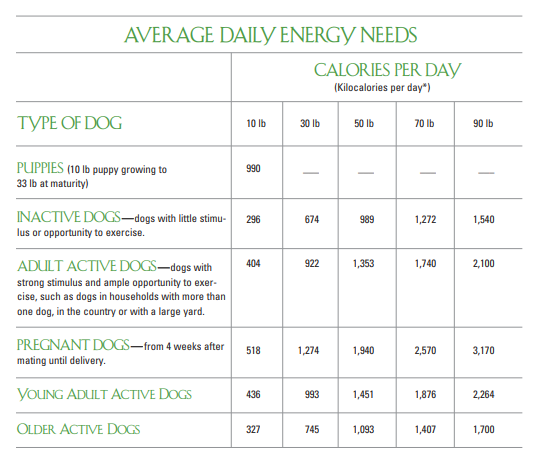
Or, if you enjoy doing the math yourself, have fun with the OSU Veterinary Medical Center’s Basic Calorie Counter.
Homemade Dog Treats
If you’re not feeling quite up to making a main course for your pooch, try whipping up some treats to start. Check out these recipes for DIY dog treats.
- 5 Genius No Bake Dog Treats
- 9 Homemade Dog Treats for Spoiling Your Pup
- Peanut Butter Oat Dog Treats Your Dog Will Go Nuts Over

Even if your dog is healthy and enjoys a normal adult dog diet, before embarking on a homemade dog food journey, discuss this path with your pup’s veterinarian.
Once you’ve had the conversation, done your research, and gathered all your ingredients, it’s time to get cooking and feed your furry forever friend the feast they deserve!
The post Homemade Dog Food: Get Cooking For Your Good Looking Hound appeared first on iHeartDogs.com.
via Whisker Therapy
